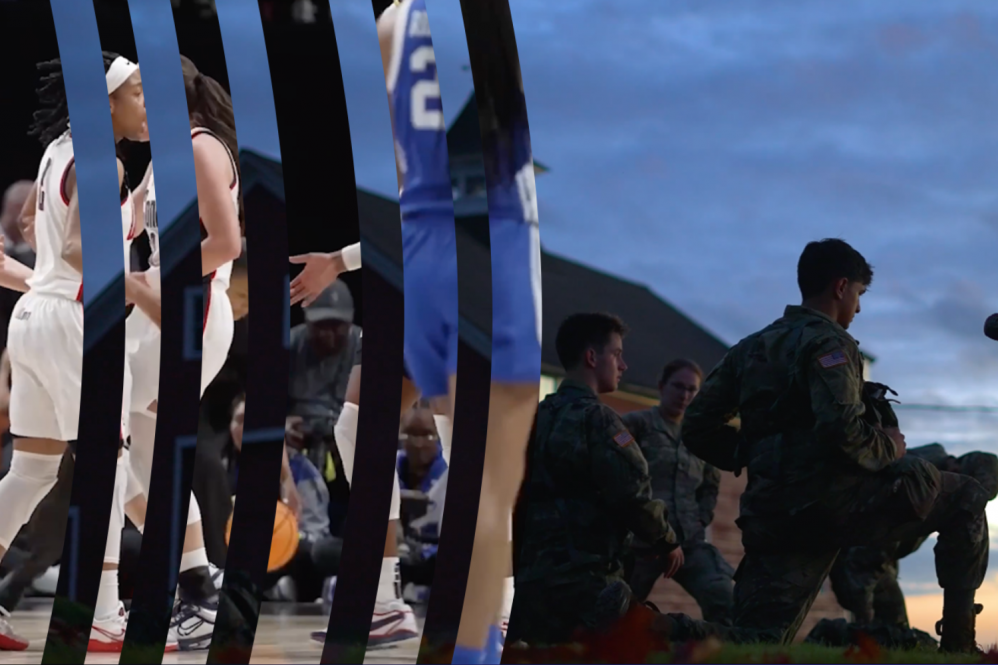UConn’s basketball teams aren’t the only ones leaving a lasting impact at Gampel Pavilion.
Deep in the belly of the iconic domed building where championship banners line the rafters, an interdisciplinary team of researchers from the Department of Kinesiology and the Institute for Sports Medicine employs high-tech sensors to learn more about how people move with the goal of helping athletes, active-duty service members, veterans — and eventually, all of us — heal and avoid injury.
Neal Glaviano, assistant professor of kinesiology in the College of Agriculture, Health and Natural Resources, is leading a Department of Defense-funded project focused on chronic kneecap pain, also known as patellofemoral pain, which is among the most common causes of disability in active duty and reserve-based military units.
“It’s the No. 1 cause of discharge from basic training,” says Glaviano, who has served in the Army National Guard for 22 years. “What we’re trying to do is have a better understanding of how it develops, whether it be increased load training activities in basic training, individuals who are maybe not coming in as physically fit as they need to be, or altered movement patterns.
“We’re trying to identify how we can diagnose them early so we can provide care as soon as possible to decrease the long-term outcomes of disability or pain.”

If we can understand how someone moves, we might be able to identify poor movement patterns or a specific risk factor that might set them up for a lower extremity injury.
Using portable sensors similar to those used to capture movement to create video games or movies, the researchers are screening members of UConn’s athletics teams and its Army ROTC (Reserve Officers’ Training Corps) to identify how individuals in these groups move and pinpoint their risks for injury.
“Human movement is consistent across individuals regardless of the activities they engage in or the sports that they play,” says Glaviano. “If we can understand how someone moves, we might be able to identify poor movement patterns or a specific risk factor that might set them up for a lower extremity injury.”
Historically, projects like these required study participants to go to a fixed lab setting. But recent advances in technology mean that Glaviano and his collaborators can bring the equipment anywhere and set it up quickly.
“Within 25 minutes, we’re able to understand how someone moves and measure how their knee might flex or how much their trunk might rotate when they go through functional tasks,” he says.
Looking at the study subjects from their perspectives as athletic trainers, physical therapists, biomedical engineers, and orthopedic surgeons allows the researchers to consider various lenses when trying to improve patient outcomes.
The team will analyze the data set it’s collecting to identify certain risk factors and poor movement habits. They hope to develop patient education on optimal movement, as well as intervention programs and rehab exercises that can decrease the risk of kneecap injury and improve return to function for those who do suffer.
“The hope is that individuals who might experience this kneecap pain, they’re able to live long, healthy lives. They’re able to go out and play with their kids and not have to worry about not going to certain parks because the asphalt is going to cause problems on their knee pain,” says Glaviano. “And for clinicians, if they can improve their outcomes and optimize the treatment that’s provided, less resources are needed from them.”



